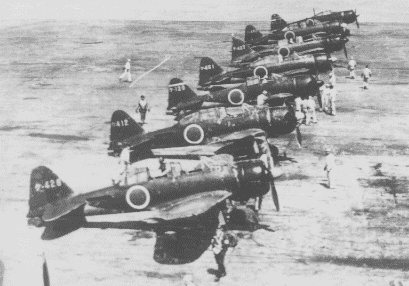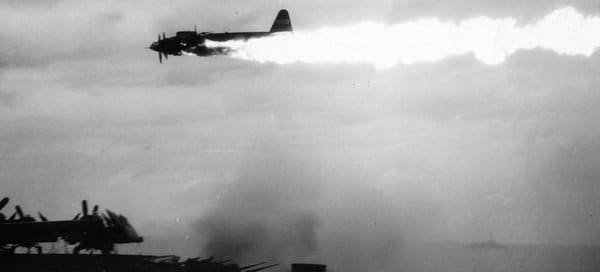Around the Imperial Palace, Tokyo
Controversial Kamikaze Attack on August 15, 1945
There was an admiral of the Imperial Navy of Japan during WWII who carried out a kamikaze suicide attack after the Emperor announced his decision to surrender to the allied forces at noon of August 15, 1945, by radio to the general public of the Empire.
Matome Ugaki (1890–1945) was an admiral in the Imperial Japanese Navy during World War II, remembered for his extensive and revealing war diary, role at the Battle of Leyte Gulf, and kamikaze suicide hours after the announced surrender of Japan at the end of the war.https://en.wikipedia.org/wiki/Matome_UgakiThe controversy about his act is mainly related to the fact that Admiral Ugaki did not pilot a military plane by himself but he led 11 Imperial Navy bombers to the post-surrender kamikaze attack, though three bombers made emergency landing before reaching a target sea area around Okinawa. Ugaki forced 16 airmen of the Imperial Navy to die in the post-surrender kamikaze attack.
At least two of those kamikaze bombers led by Ugaki reached an island of Okinawa, and crashed on rocks on the shore and the ground beside a US military base, respectively. No American military's damage was confirmed. Admiral Ugaki is believed to have been on the bomber that fell on the rocks on the shore. Officers who piloted these bombers seem to have avoided hitting their planes to American military ships or troops on purpose.

Admiral Ugaki before his Kamikaze Attack
http://www.geocities.jp/torikai007/war/1945/ugaki.html
Admiral Ugaki, as Chief-of-Staff of the Combined Fleet under Admiral Isoroku Yamamoto, had been so close to Admiral Yamamoto. Yamamoto was the planner of the 1941 Pearl Harbor Attack. Following the direct order from Yamamoto, an imperial fleet with six aircraft carriers attacked US bases in Pearl Harbor, Hawaii, to start the war against America.
But, while Admiral Yamamoto was making an inspection tour to Solomon in the South Pacific in 1943, a plane he was on was shot down by US fighters. (It is said that Yamamoto's flying plan had been known to the US military forces beforehand through decoding of secret messages having been sent by the Imperial Navy.) Admiral Ugaki accompanied Yamamoto on this tour. The plane carrying Ugaki was also shot down, but Ugaki survived. Later, Ugaki received Yamamoto's dagger as a memento.
According to some report, some airmen mobilized for this post-surrender kamikaze attack led by Admiral Ugaki were not informed of the Emperor's radio address, and thus they did not realize the war was over. Therefore, this kamikaze attack has been under criticism and not counted as a legitimate one carried out following an official order of the imperial military.
But what influence has this episode had on the Japanese people after WWII?
At least the Japanese people have come to abhor the rule by military after WWII.
When a war is being won due to brave acts of the military, the public naturally respect generals and bellicose politicians. But even if a war is being lost due to poor management and planning by military leaders, it is difficult for the public to blame those generals and bellicose politicians. People without knowledge and freedom would rather fight and die with leaders who are promoting war with confidence or madness. Some would rather join a post-surrender kamikaze attack with a general they have been taught to respect unconditionally in the society under control by the military.
The lesson must be that a nation must not have its supreme leader or a monarch who is a military man by his nature.
(But was Hitler a military man by his nature?)
Luckily, successive emperors of Japan, except those in ancient days, have not been warriors but rather cultural figures. It was unthinkable even during WWII that the emperor would directly command the military and plan operations. The Emperor of Japan in WWII could not carry out a kamikaze attack, because without him, there was no reason for the imperial military to fight any foreign forces.
Incidentally, if the Emperor directly ordered Admiral Ugaki no to conduct a kamikaze attack, Ugaki would not commit a suicide attack with other soldiers. But, it is apparent that the Emperor had no intention and ability to directly plan any military operations and command any imperial forces, though he was the supreme commander of the Imperial military according to the Imperial Constitution.
APPENDIX. Kamikaze Attack Related Pictures

http://ameblo.jp/tubasanotou/entry-12025645730.html

http://www1.mahoroba.ne.jp/~ple/t071.html

http://www.geocities.jp/torikai007/1945/1944kamikaze.html

http://www.geocities.jp/torikai007/1945/1944kamikaze.html

http://www.rak2.jp/hp/rak2_pv.cgi?no=kamikaze0&prof_view=1

http://www.rak2.jp/hp/user/kamikaze0/

http://blog.goo.ne.jp/sakurasakuya7/e/2a659f51810048e6456c808adfe75879

http://plaza.rakuten.co.jp/grossblg05/diary/200707180000/

http://ameblo.jp/tubasanotou/entry-12025645730.html
**** **** ****
Luk 8:14 And that which fell among thorns are they, which, when they have heard, go forth, and are choked with cares and riches and pleasures of this life, and bring no fruit to perfection.

